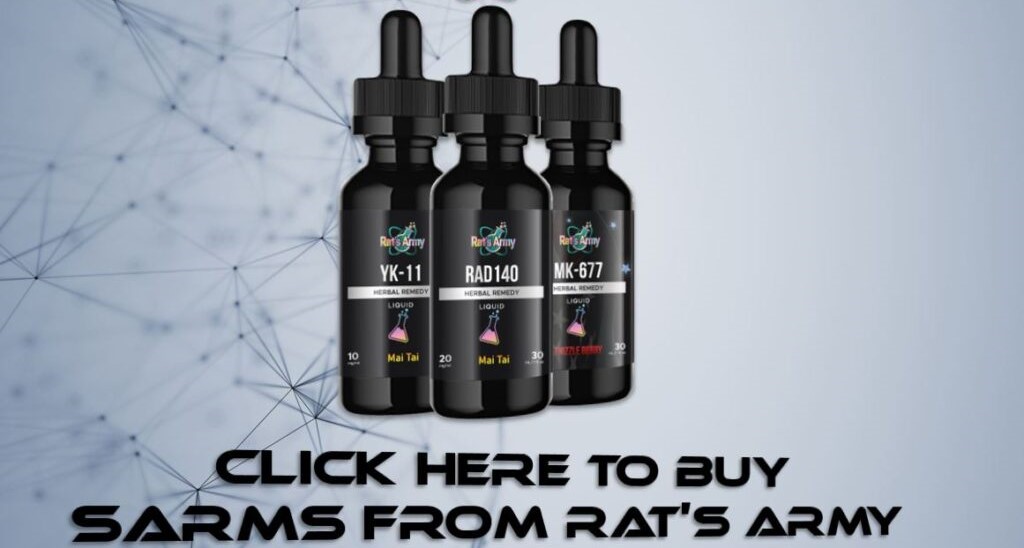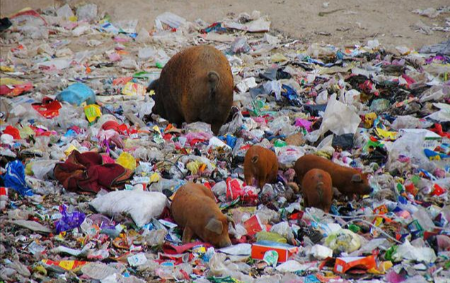Chinese pigs eating waste on a landfill
A few days ago, a horrifying video began to circulate showing supermarket food being ground up, still fully wrapped in plastic, to make animal feed.
The video, presumably from the US, was originally posted on TikTok by the user Kash (@gmfmusik). With the caption ‘Y’all believe me now’ and a host of emojis, the video follows unused supermarket food as it travels up a conveyor and into a huge industrial grinder.
‘Go up the line into that big s*** called a grinder,’ narrates the man filming the video. ‘And it grinds it out and turns it into [inaudible]. And then the hog eats it.’
The camera then pans to a huge pile of ground material. ‘This what it look like when it’s done. The hog eat it and then you eat the hog. HA HA HA HA!’
One Twitter user’s response
In response, some were quick to issue sensible advice on how to avoid eating meat fed with such material. ‘Local and grass-fed (or shipped from reputable brands/farms such as Butcher Box). Know where your food is coming from,’ advised one sage user.
Most, though, simply expressed their utter incredulity. ‘Issuing a fatwa on industrial farming’, one wrote, while another wrote, ‘Yo I can’t believe this is what they feed livestock. Wtf.’
Since the original video, Kash has put out further videos to back up his claim that the original was genuine, including videos of boxes of the plastic-wrapped foods before they’ve been ground and of open-backed feed lorries receiving the ground-up material.
Cows eating candy
A few weeks ago, we reported that famers in the US were feeding their cattle defective Skittles because doing so worked out cheaper than feeding them corn.
A local report found that defective candies were sent to ranchers as forms of ‘cheap carbs’. In 2012, Reuters found that farmers could cut costs by up to 50% by switching to these “cheap carbs”.
A 2013 article in Mother Jones noted:
‘Ranchers report feeding their beef steers and dairy cows a variety of bulk candy, including gummy worms, marshmallows, hard candy, sprinkles, chocolate, candy corn, and hot chocolate mix. Candy provides sugar that cows would usually get from corn, giving them more energy and making them fatter. When corn prices skyrocketed, the practice became popular: In fall 2012, one candy supplier who sells farmers and ranchers “salvage” chocolate—that’s imperfect and broken chocolates—said the price of the stuff had recently doubled.’
It also noted that many farmers weren’t even removing the wrappers, with one ‘expert’ stating that the plastic would just pass through the animals ‘like fiber’ without causing any harm.
Skittles due to be delivered to farmers in Wisconsin were spilled across a highway in 2017
While the idea of a farmer feeding Skittles to his cattle in itself is likely to come as a surprise, to see the process taking place on an industrial scale without any care to remove the plastic, is likely to come as a far bigger shock to many consumers of meat.
Although information from the FDA on this practice in the US is not easily forthcoming, the truth is that in Europe and the UK this practice has been taking place for some years, as the Guardian reported in 2018, and is already regulated by law.
The Guardian article begins,
‘Plastic traces in animal feed could pose a risk to human health and urgently need to be the subject of more research, experts have told the Guardian.
Their comments came after British farmer Andrew Rock contacted the Guardian, having noticed plastic shreds in his animal feed. Rock was told by the suppliers that this was a legal part of the recycling process that turns waste food, still packaged, into animal feed.
Rock runs a small-scale pig farm in Lincolnshire, and had been spotting tiny pieces of plastic in his pigs feed for several months. “In the back of my head I thought maybe it was people dropping gloves into the feed mill. I took a kilo scoop out of the bag and I did this over several weeks. I laid it out in the light and I found plastic in nearly every scoop.”’
Animal feed pellets with visible blue plastic in them, as photographed by British farmer Andrew Rock
Rock contacted the suppliers and was shocked to discover that the plastic had not ended up in the feed as a mistake, but was an inescapable part of the process of producing it, which involved disposing of unused food.
In the UK, over 650,000 tonnes of unused food – everything from loaves of bread to chocolate bars – are saved from landfill each year by being used as animal feed. Because the machinery that strips the food of its packaging cannot remove all of it, tolerable limits on plastic content have to be set. That limit has been set at 0.15% by the UK Food Standards Agency.
The Guardian article notes that, although ‘official EU level for plastic permitted in animal feed is zero although in reality many other countries operate within the same 0.15% limit.’
Doctors and scientists, including toxicologists, have called for further investigation into the potentially harmful effects that could be passed on to humans eating animals fed this feed.
One such scientist is Dr Stephanie Wright, of King’s College London, who was interviewed by the Guardian.
‘I definitely hope there is more research’, she said. ‘The chemicals at microscopic level in the network that make up plastic, [that are used] to give flexibility, or flame retardent properties, they can come off very easily, they are susceptible to leaching. This is why BPA [a chemical found in food packaging] was banned from baby bottles, because it leached into the milk from the plastic.’
One of the problems, she notes, is that it will be hard to identify whether plastic in animal feed is the cause of toxicity in humans, because the environment we now inhabit has become so toxic anyway.
The general toxicity of the modern environment has been a constant refrain for us over the past few months, and at Herculean Strength we’re doing our utmost to provide you with the best information to protect yourself and your loved ones as much as you can.
We recommend beginning with our primer on endocrine-disruptors, which will help you to identify potential sources of hormone-altering substances in your diet and environment and provides easy tips to minimise your exposure.

Don’t hesitate to email us at [email protected] for personalized coaching and a client questionnaire if you’d like DEDICATED tailor-made personal training on strength training, building muscle, losing fat, developing athleticism, and more — all to your liking, lifestyle, habits, and taste!
Otherwise, don’t forget to claim your FREE eBook detailing how to lose 20lb of fat while building muscle in 12 weeks! You can claim it here.
Alternatively, you can pick up a FREE eBook on fundamental strength principles offering an introductory workout program.













